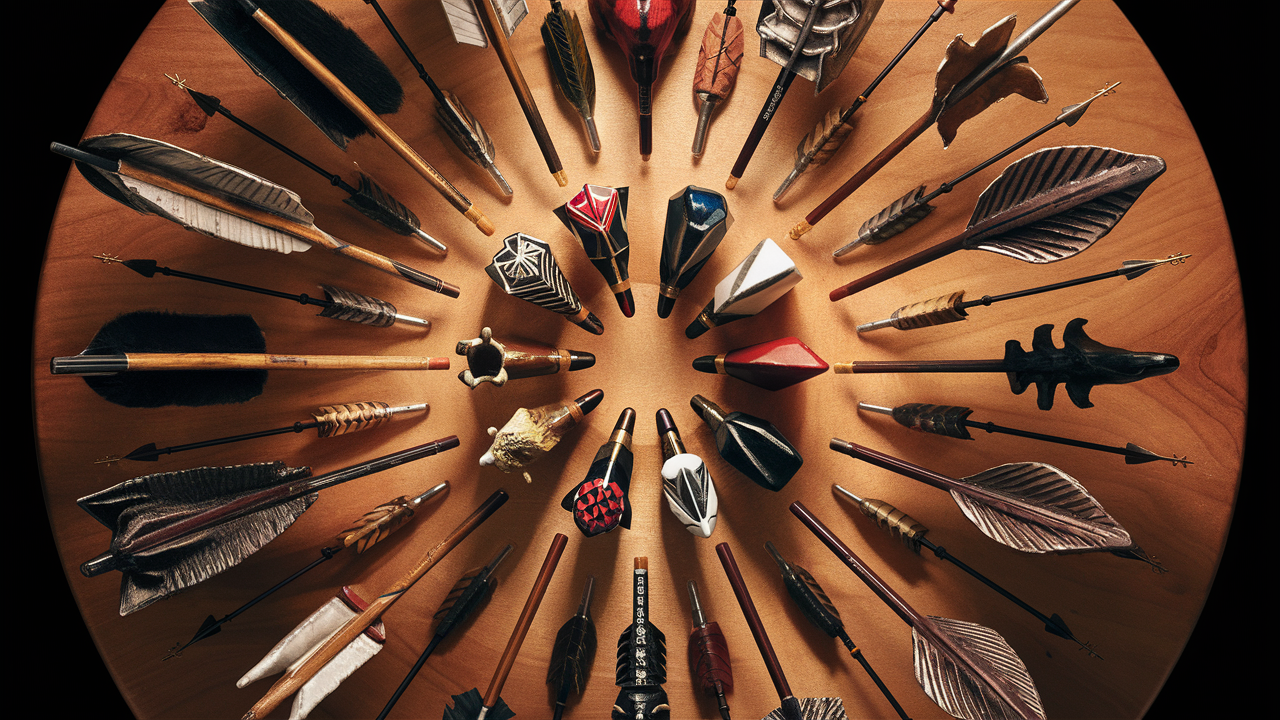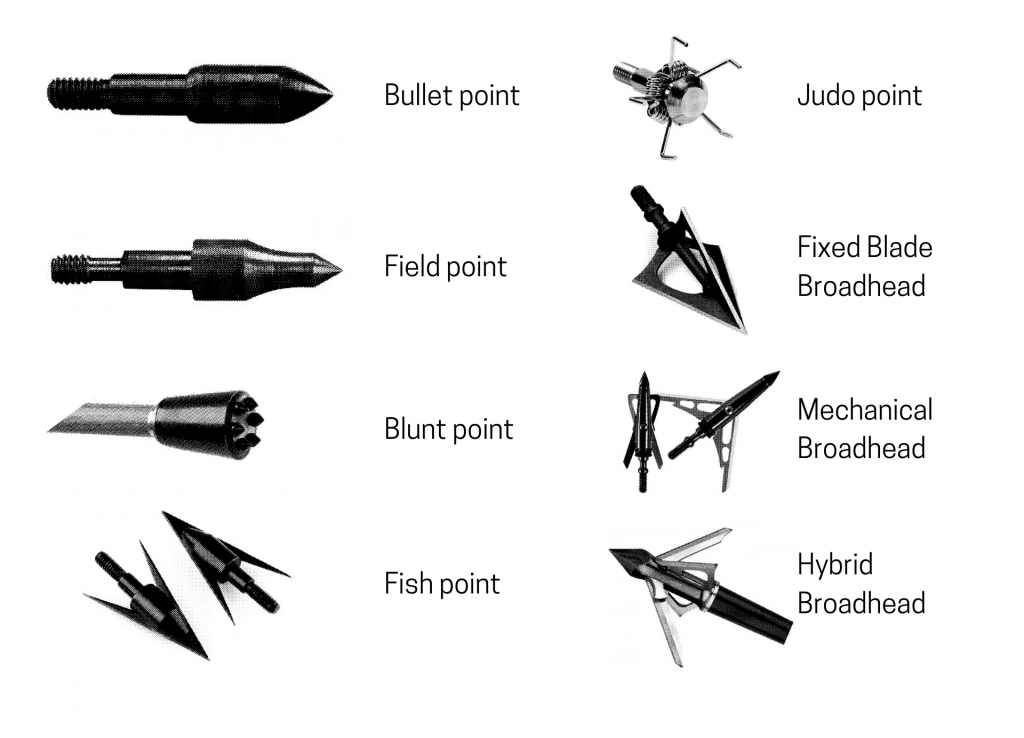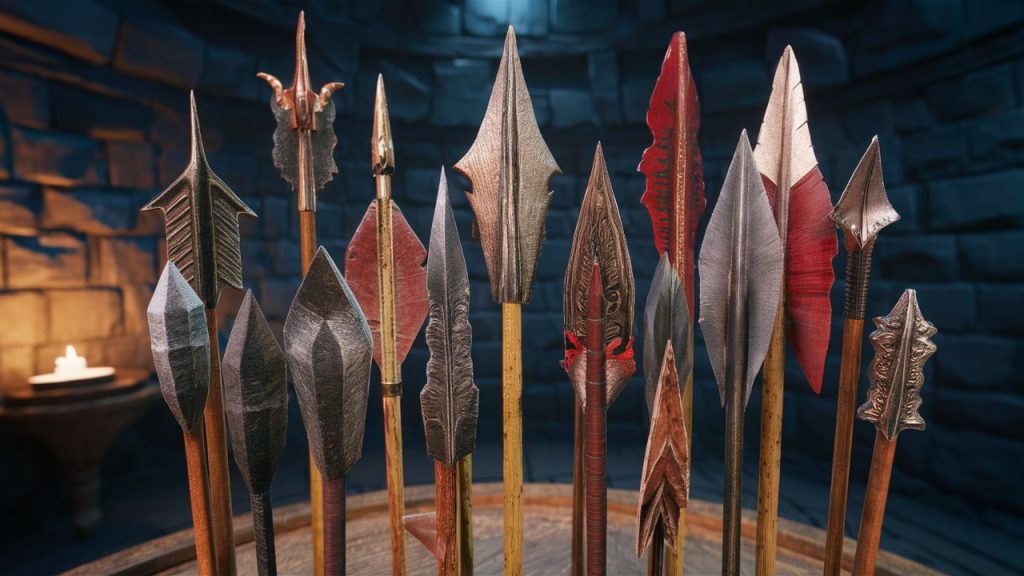Arrow Tips Guide

Arrow tips, often referred to as arrowheads, play a critical role in archery, significantly influencing the effectiveness and outcome of each shot. Whether you’re an avid hunter, a competitive archer, or someone who enjoys target practice as a hobby, the type of arrow tip you choose can make a substantial difference in your performance.
From ensuring precision during target practice to maximizing penetration on a hunt, arrow tips are designed to meet specific needs. With a wide variety of options available, understanding the different types of arrow tips and their intended uses is essential for any archer looking to optimize their shooting experience. In this article, we will explore the various types of arrow tips, their unique characteristics, and how to choose the right one for your specific requirements.
Categories of Arrow Tips
Arrow tips come in various designs, each tailored to specific archery activities. Understanding the differences between these types can help you select the right tip for your needs. Below, we break down the most common categories of arrow tips and their typical applications.

Broadheads
Broadheads are among the most popular arrow tips, especially in the hunting community. Known for their wide cutting edges, broadheads are designed to cause maximum damage upon impact, making them ideal for big game hunting.
- Types of Broadheads:
- Fixed Blade: These broadheads have blades that are permanently fixed in place. They are known for their durability and reliability, with little chance of malfunction. However, they require precise tuning to fly accurately.
- Mechanical (Expandable): These broadheads have blades that deploy upon impact. They are favored for their aerodynamic flight, which is similar to field points. While they offer larger cutting diameters, there is a slight risk of the blades not deploying properly.
- Hybrid: Combining features of both fixed blade and mechanical broadheads, hybrids offer the reliability of a fixed blade with the added cutting power of expandable blades.
- Common Uses: Broadheads are primarily used in hunting due to their ability to deliver fatal shots, ensuring a quick and ethical kill.
Field Points
Field points are the go-to choice for target practice. These tips are designed for precision and ease of removal from targets, making them ideal for repetitive shooting.
- Types of Field Points:
- Screw-in: These are threaded and can be easily screwed onto the arrow shaft. They offer versatility and are the most common type of field point.
- Glue-on: As the name suggests, these points are glued directly onto the shaft. They are often used with traditional wooden arrows.
- Common Uses: Field points are primarily used for target practice and small game hunting. Their streamlined design ensures consistent flight and accurate shooting.
Blunt Tips
Blunt tips are designed for impact without penetration. They are typically used when you need to deliver a strong, non-lethal blow.
- Types of Blunt Tips:
- Rubber Blunts: These tips are made from rubber and are often used for small game hunting. They deliver a concussive force that can stun or kill small animals without penetrating them.
- Judo Points: Equipped with spring arms, these tips prevent the arrow from getting lost in grass or brush. They are popular for stump shooting and small game hunting.
- Common Uses: Blunt tips are commonly used for small game hunting, stump shooting, and target practice where you don’t want the arrow to penetrate deeply.
Bullet Points
Bullet points are a specific type of field point with a rounded, bullet-like shape. They are designed for easy removal from targets and minimal wear on target faces.
- Common Uses: Bullet points are widely used in target practice, particularly for shooting into foam or other soft targets. Their shape makes them less likely to cause damage to the target, extending its lifespan.
Fish Points
Fish points are specialized arrow tips designed for bowfishing. They feature barbs that secure the fish once the arrow has struck.
- Common Uses: Fish points are exclusively used in bowfishing. The barbs ensure that the fish remains attached to the arrow as it is retrieved, making them highly effective for this specific activity.
Specialty Tips
Beyond the common types, there are various specialty arrow tips designed for niche applications. These include:
- Game Nabbers: Designed for small game, these tips feature multiple sharp prongs to increase the chances of hitting and securing the target.
- Gator Points: Used in hunting larger aquatic prey like alligators, these tips have strong barbs and are extremely durable.
- Niche Applications: Specialty tips are tailored for specific hunting situations or challenges, offering unique solutions that standard tips may not provide.
Understanding these categories and their uses can greatly enhance your archery experience, whether you’re practicing your aim, hunting, or engaging in bowfishing. The right arrow tip ensures not only better performance but also a more enjoyable and effective shooting session.
Choosing the Right Arrow Tip
Selecting the right arrow tip is crucial for achieving optimal performance in archery, whether you’re hunting, practicing on targets, or engaging in specialized activities like bowfishing. The right tip can make the difference between a successful shot and a missed opportunity. Here are some key factors to consider when choosing an arrow tip:
Purpose of Use
The most important consideration when choosing an arrow tip is the purpose it will serve. Different tips are designed for specific activities, and using the wrong type can lead to poor performance or even damage to your equipment.
- Hunting: If you’re planning to hunt, broadheads are generally the preferred choice due to their cutting power and ability to cause significant damage, ensuring a quick and humane kill. For small game hunting, blunt tips or judo points are more appropriate, as they are designed to knock down the target without over-penetrating.
- Target Practice: For target practice, field points or bullet points are ideal. They are designed for accuracy and easy removal from targets, making them perfect for repetitive shooting sessions.
- Bowfishing: When bowfishing, fish points are essential. Their barbed design ensures that once the arrow strikes the fish, it remains securely attached as you retrieve it.
Arrow Shaft Compatibility
Not all arrow tips are compatible with every type of arrow shaft. It’s important to ensure that the tip you choose matches the type of shaft you are using.
- Screw-in Tips: These are versatile and can be used with most modern carbon or aluminum shafts. They are easy to replace, allowing for quick changes in the field.
- Glue-on Tips: Typically used with traditional wooden shafts, glue-on tips require a bit more preparation but are favored by archers who prefer a traditional setup.
Make sure the weight of the tip, often measured in grains, is appropriate for the shaft you are using. A mismatch in weight can affect arrow flight and accuracy.
Bow Type and Draw Weight
The type of bow you’re using, as well as its draw weight, can also influence your choice of arrow tip.
- High Draw Weight Bows: If you’re using a bow with a high draw weight, such as those used in big game hunting, you’ll need a more robust tip like a fixed blade broadhead that can withstand the force and deliver deep penetration.
- Low Draw Weight Bows: For bows with lower draw weights, such as those used in target archery or small game hunting, lighter tips like field points or blunt tips may be more suitable.
Environmental Conditions
Consider the environment in which you’ll be shooting. If you’re hunting in thick brush or areas with dense undergrowth, a judo point might be useful as it prevents the arrow from burrowing into the ground or getting lost. For open-field hunting, a broadhead with a good cutting diameter is ideal to ensure effectiveness even at longer ranges.
Personal Preference and Experience Level
Finally, your personal preference and experience level should play a role in your decision. Experienced hunters might prefer the reliability of a fixed blade broadhead, while beginners might opt for mechanical broadheads due to their ease of use and flight consistency. Target archers might prefer bullet points for their simplicity, while those practicing for hunting might choose field points that closely mimic the flight of their hunting broadheads.
Matching Tip Type to Shooting Activity
To ensure you’re using the right arrow tip for your specific activity, consider the following matches:
- Big Game Hunting: Fixed Blade or Mechanical Broadheads.
- Small Game Hunting: Blunt Tips, Judo Points, or Small Broadheads.
- Target Practice: Field Points or Bullet Points.
- Bowfishing: Fish Points with Barbs.
- Stump Shooting: Blunt Tips or Judo Points.
By carefully considering these factors, you can select the arrow tip that best suits your needs, enhancing both your accuracy and overall archery experience. Remember that the right arrow tip not only improves your performance but also ensures the safety and integrity of your equipment.
Maintenance and Care of Arrow Tips
Proper maintenance and care of your arrow tips are essential for ensuring consistent performance, safety, and longevity of your archery equipment. Neglecting this aspect can lead to dull blades, poor accuracy, and even damage to your arrows or bow. Here’s how to take care of your arrow tips effectively:
Regular Inspection
Before and after each use, inspect your arrow tips for any signs of wear, damage, or dullness. Pay special attention to:
- Broadheads: Check the blades for nicks, bends, or dull edges. Even minor damage can affect the arrow’s flight and penetration, especially in hunting situations where precision is crucial.
- Field Points and Bullet Points: Look for signs of deformation or wear, particularly if you’ve been practicing with hard targets. Make sure the tips remain sharp and evenly shaped.
- Blunt Tips and Specialty Points: Inspect for cracks or other structural damage, especially around the impact area. Ensure that spring arms or barbs on specialty tips are functioning correctly.
Sharpening Tips

For tips that require sharp edges, such as broadheads, regular sharpening is necessary to maintain their effectiveness. Here’s how to sharpen your arrow tips:
- Using a Sharpening Tool: Many archery supply stores offer sharpening tools specifically designed for broadheads. These tools can help you maintain the correct angle and ensure even sharpening across all blades.
- Hand Sharpening: For those who prefer a hands-on approach, a sharpening stone or file can be used. Hold the broadhead at the correct angle and make smooth, consistent strokes along the edge of each blade. Always sharpen in the same direction and avoid back-and-forth motions, which can dull the blade.
- Mechanical Broadheads: If your mechanical broadheads have removable blades, consider replacing them rather than sharpening. This ensures that the blades are in peak condition and maintains the integrity of the tip’s design.
Cleaning Arrow Tips
After each use, especially in outdoor environments, clean your arrow tips to remove dirt, debris, and moisture that can lead to corrosion or rust.
- Broadheads: Disassemble mechanical broadheads if possible and clean each part individually. Use a soft brush to remove any debris from fixed blade broadheads.
- Field Points: Wipe down with a dry or slightly damp cloth after use. For tougher dirt or residue, a small amount of mild soap and water can be used. Be sure to dry thoroughly afterward.
- Blunt Tips and Specialty Points: Clean using a brush or cloth, ensuring any moving parts, like the spring arms on judo points, are free from debris.
Storage
Proper storage of your arrow tips is essential to prevent damage and maintain sharpness. Here’s how to store them correctly:
- Broadheads: Use a broadhead case designed to keep the blades protected and separated. This prevents the blades from dulling each other and minimizes the risk of injury when handling them.
- Field Points and Bullet Points: Store in a dry, cool place. Consider using a small container to keep them organized and to avoid them knocking against each other.
- Blunt Tips and Specialty Points: Store in a manner that prevents them from being crushed or damaged, especially those with spring-loaded parts or barbs.
Safety Considerations
Handling arrow tips, particularly sharp broadheads, requires caution. Follow these safety tips to prevent injury:
- Use Protective Gloves: When sharpening or assembling broadheads, wearing protective gloves can prevent accidental cuts.
- Transport with Care: Always use protective cases or covers when transporting arrows with tips attached. This not only protects the tips but also prevents accidental injury.
- Handle with Attention: Never point an arrow with a tip attached towards yourself or others, even when it’s not nocked on the bow. Treat every arrow as if it’s ready to shoot.
Replacing Worn or Damaged Tips
Over time, even the best-maintained arrow tips will wear out or suffer irreparable damage. It’s important to replace tips when they are no longer functioning optimally.
- Broadheads: Replace blades or the entire broadhead if sharpening is no longer effective or if the structural integrity is compromised.
- Field Points: Replace field points if they are deformed, causing inaccurate flight, or if they no longer screw in securely to the shaft.
- Specialty Tips: Replace if moving parts are no longer functioning as intended, such as barbs not retracting properly.
By regularly maintaining your arrow tips, you ensure they remain in peak condition, ready to perform when you need them most. Whether you’re in the field hunting or on the range practicing, well-maintained tips can make all the difference in your accuracy, safety, and overall archery experience.
Conclusion
Choosing the right arrow tip is a vital part of any archer’s success, whether in hunting, target shooting, or specialized activities like bowfishing. The variety of arrow tips available—broadheads, field points, blunt tips, bullet points, fish points, and specialty tips—each serve distinct purposes, and selecting the appropriate one can greatly enhance your performance and satisfaction in the sport.
Understanding the specific uses and characteristics of each type of arrow tip allows you to tailor your equipment to your needs, ensuring that your arrows fly true and hit their mark with precision. From the lethal effectiveness of broadheads in hunting to the reliable accuracy of field points for target practice, the right tip can make all the difference.
In addition to selecting the correct arrow tip, proper maintenance and care are essential for ensuring that your tips remain sharp, functional, and safe to use. Regular inspection, cleaning, and storage, along with timely replacements, help maintain the integrity and performance of your equipment.
In summary, the arrow tip is more than just a piece of metal at the end of your arrow—it is a critical component that can determine the success of your shot. By choosing the right tip for the job and maintaining it properly, you can elevate your archery experience, achieving better results and greater enjoyment in the sport.
